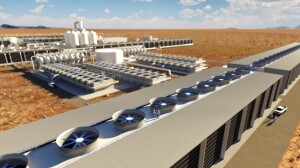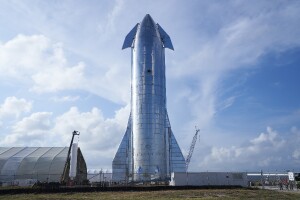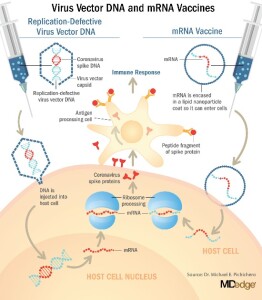We live in a time of great challenges yet great innovation. Do you feel overwhelmed with the constant proclamations about what problems need solving most urgently, and what technologies are most effective? Do you seek to invest in new technology that has unrealized potential?
On March 17, 2022, Alok Jha, science editor for the Economist, engaged two of his colleagues in a few lightning rounds of “Tell Us About Technology.” The colleagues were Slavea Chankova, healthcare correspondent, and Tom Standage, deputy editor. The three of them gave brief speeches meant to summarize a selected technology and its significance to current issues, excluding war.
To be included as an emerging technology for today’s presentation, the criteria were necessarily vague. Some technologies, such as artificial intelligence, did not seem so emergent anymore. Some technologies that were chosen, such as m-RNA, have been around for decades, but they are only coming into prominence due to their role in addressing a crisis. In general, emerging technologies tend to be rare and expensive at the outset—seen as rich men’s playthings, such as Starship—but are gradually re-designed and popularized. More adopters appear once the new technology benefits from economies of scale.
Direct Air Carbon Capture
“Direct air carbon capture sucks carbon directly out of the air and, through chemical reaction, embeds it in the ground,” Tom Standage, deputy editor, said. “These plants do require energy to run, but if you choose sustainable energy sources, you can have negative carbon emissions.”
In Iceland, the DACC plants use geothermal energy.
Currently, he said, “it costs $200-$600 per ton to remove the CO2, so they need to work on scaling up.” A DACC plant requires less than 1 percent of the land needed by trees to have the same carbon-capture effect.
“There is some moral hazard associated with this,” Standage said. “Some companies might say, why bother cutting their carbon emissions?” but he believes it is an important step. Companies tasked with environmental, social and corporate governance (ESG) requirements will buy carbon tons. For example, Microsoft plans to offset all the carbon emissions made by their company since the year it was founded.
Standage admitted that DACC still had some problems. Once upon a time, he argued, cars were unusual, and no infrastructure existed to make them cheaply enough for average people to afford, and no gas stations were around to refuel them. Even with making large-batch fertilizer, the chemical reaction to do it cheaply and efficiently had to be developed. Despite some initial hurdles, he said, “I think DACC is a winner.”
Personalized Nutrition
Healthcare correspondent Slavea Chankova described personalized nutrition as the development of apps and devices that measure a person’s blood sugar via sensor, with an algorithm to keep track of the effect of various foods on the body. “You will get a score for the food you’ve eaten—and a tip for how to tweak the food, make it more nutritious, such as adding nuts to the ice cream sundae,” she said. “Or maybe it will tell you to go for a walk afterward.”
There are several personalized nutrition apps available on the market. [Shopwell, Facetime for Fitness, Kettlebell, etc.]
Chankova said the apps relied on constantly taking personal data from the wearer. Some persons might object to this, but they are not the target demographic. “You need to hand over the data to get the benefits.” She viewed it as a natural outgrowth of our obsession to develop instruments to track our health. Things like the weigh scale and the blood sugar monitor help us calibrate a healthy lifestyle.
Some experts recommend an assessment of the gut microbiome as well. Recent findings show the high presence of unhealthy microbes in the intestines may contribute to weight gain, high blood sugar, high cholesterol and other disorders.
Starship
Alok Jha, science editor for the Economist, described the plans for space travel by the private company SpaceX, which is currently developing Starship, a super heavy-lift launch vehicle, which will be relatively cheap to launch, and that will “fire 150 tons into space. All the hardware will come back,” he said. Elon Musk, the founder of SpaceX, wants to build a colony on Mars. The industrial feasibility depends on transporting heavy payloads, such as a fleet of Mars rovers.
“Some people might be asking, shouldn’t we be trying to make things better on Earth, rather than starting a new colony,” Jha said. He pointed out there will be good spin-offs from Starship. As an example, StarLink (operated by SpaceX) distributes thousands of satellites so that everyone on Earth can have a broadband link.
As for the environmental impact, he said there are “hundreds of launches a day” and “Starship will only emit a fraction of what the aviation industry emits as a whole.”
The Metaverse
“Should we connect all parts of the virtual world?” asked Standage. “Will it give us something greater than the sum of its parts?” He encouraged the audience to “look beyond buying and selling NFTs” (nonfungible tokens) and the recent renaming of Facebook (to Meta).
The true metaverse “has the potential to connect all devices.” Although many forms of technology decrease social connection, Standage said there are instances where it has increased social connection, such as people socializing through multi-player video games and social media.
“In the future, people will think our generation was strange for distinguishing between ‘real life’ and ‘virtual life.’” He drew a distinction between Second Life, an online multimedia platform that allows people to create avatars and have a second life in an online virtual world, and the generic metaverse, the sum of all virtual spaces.
The chief obstacle the metaverse needs to overcome is that its components are not interchangeable. “The internet works because it has underlying standards,” he said, referring to the agreed-upon protocols. “Phones currently have a duopoly.” The metaverse right now depends on which company is claiming which part.
Wearable Health Trackers
Although there are some health tracker devices on the market already, Chankova said, “There will be many more coming soon.” New, more accurate sensors are being developed to measure levels of hydration, urea, lactic acid, alcohol, and so on.
“Now we can know in real time the effects of things on our bodies,” she said. This will require “improvements in the algorithms, to cut through noise and have better processing power” for simple recording of things like temperature measurement and sleep tracking.
At the high end, there are machines used by doctors and other healthcare practitioners. “These must go through clinical trials before their data is considered reliable.”
m-RNA vaccines
The m-RNA molecule acts like a messenger within cells,” said Alok Jha, “telling them how to make a protein.” Making vaccines with m-RNA was a technology developed back in the 1970s, although it needed some improvements, because m-RNA is a very delicate kind of molecule. “Due to the demands of the pandemic, the clinical trials were speeded up,” he said. This does not mean it was slap-dash, unreliable technology, as some critics claim.
The m-RNA process is so well understood that, once the DNA sequence of the Covid virus was known, “it took Moderna only seven weeks to develop their first m-RNA vaccine prototype.”
The technology of m-RNA vaccines could have broad implications for much of healthcare. “We could personalize cancer vaccines,” he said. “Flu vaccines that normally take six months to make can now be made in ‘small-brew’ m-RNA labs.” There are applications to HIV.
During the final portion of the webinar, questions were fielded from the audience, and the panellists discussed the historical view of “emerging” technologies. “Remember the personal phone,” Chankova said. “They were uncommon and expensive and could not always get a signal.” Now that has changed, to the benefit of many.
The audience participated in a Zoom poll asking which of the six technologies featured today had the most promise. First place went to m-RNA vaccines and second place to direct air carbon capture. ♠️






